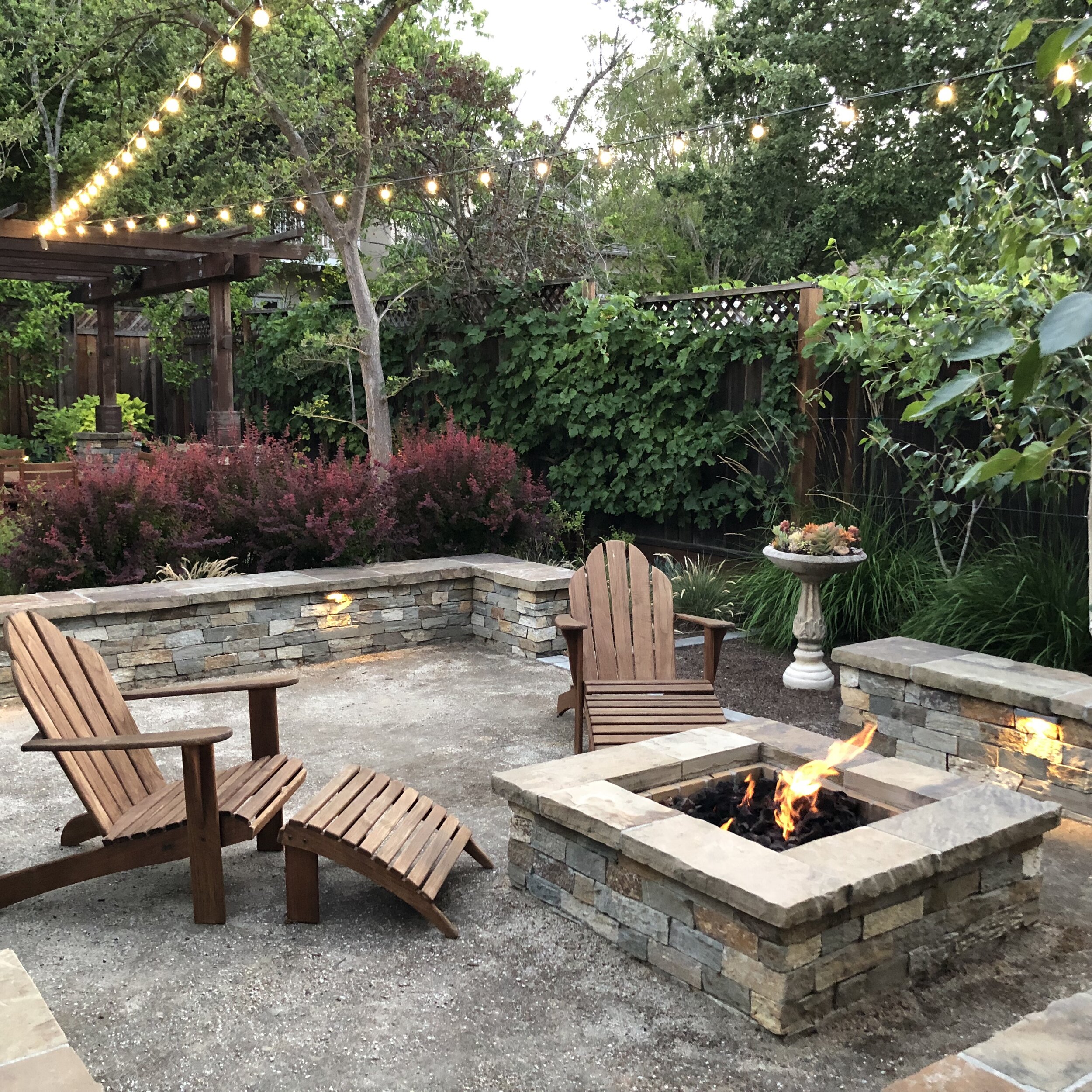Know Your Pro: Landscape Designer vs Landscape Architect
Whether you’re building a new custom home from the ground up or remodeling your existing house, chances are you’ll also want custom landscaping that better suits your tastes and lifestyle. Two professionals are uniquely suited to help you make the most of every inch of your property: the landscape designer and the landscape architect.
What’s the difference between them, and how do you choose?
Structural elements such as a pergola and fire pit should be designed by a licensed professional.
In simplest terms, here in California the landscape architect is licensed by the State to both design and specify landscape elements that could impact the public’s health, safety, or welfare, whereas the landscape designer is not.
For example, the landscape architect may design retaining walls to terrace a hillside, or an arbor to shade a dining patio. Because these elements could be dangerous if improperly designed, legally an unlicensed designer may not provide plans for their construction.
This distinction also extends to the type of plans each professional may create: unlicensed designers may provide conceptual designs for features such as an arbor or a dining patio, but may not include any construction specifications, such as the size of the arbor’s posts or the dimensions of the patio.
In these instances, the unlicensed designer could indicate the proposed location, shape, and materials, but the final details would need to be determined by a licensed professional such as a landscape contractor or a structural engineer.
(Notably, the unlicensed landscape designer is allowed to provide detailed plans and specifications for plantings.)
We often explain that “the designer can’t tell the contractor how something should be built, only what it should look like when it’s finished.” For this reason, unlicensed landscape designers often rely heavily on the complementary expertise of contractors and engineers.
Another important difference is that the unlicensed landscape designer may only prepare conceptual and planting plans for single-family residences. For multi-family residences, commercial properties, or municipal sites such as schools and parks, a license is required, since a design failure could hurt hundreds or thousands of people rather than just a single family. (Here we begin to see liability management, not just technical competence, as a driving force behind licensure laws.)
These safety implications are often overlooked in grading for stormwater capture. Many unlicensed landscape designers have unwittingly illegally designed “rain gardens,” simple planted basins that capture rain and allow it to percolate back into the soil rather than running off into road gutters.
Rain gardens, detention basins, swales, and berms require grading, and so should be designed by a licensed landscape architect.
In theory, rain gardens are an easy and important way to minimize flooding, recharge groundwater reserves, filter pollutants, and mitigate the effects of drought. However, because they require excavation, their safe design demands technical knowledge to prevent flooding, erosion, or collapse. Again, should the design fail, it is easier to assign liability to a state-registered landscape architect than an unlicensed professional.
So why aren’t landscape architects the best choice for every project?
Ironically, the landscape architect’s extensive training and breadth of expertise may also make them overkill for a modest home renovation. The unlicensed landscape designer, especially one who demonstrates their professionalism as a member of APLD, can be perfectly suited to a home project that involves primarily planting.
Unlicensed designers’ fees may be lower than landscape architects’, as they aren’t burdened by the same overhead costs of licensure and insurance, and they often can work on shorter timeframes, because their scope of services is more limited.
Unlicensed designers also benefit from the stereotype that landscape architects only select common “plant material” to use again and again, while landscape designers are knowledgeable about a greater variety of species since that is an area where their practice is not restricted.
(The stereotype is grounded in the truth that landscape architects may bear financial liability for plant failures, and therefore may be reluctant to depart from tried-and-true palettes, although in fact many landscape architects have deep knowledge of plants and horticulture.)
However, for more complex home landscaping projects — for instance, involving any structures that might require permitting, such as an arbor, pergola, seat wall, outdoor kitchen, fire pit, or any grading or drainage work — a landscape architect may be the better choice to not only develop the details that the design will require, but also to manage the project throughout construction. The landscape architect’s license endows them with more authority to correct a contractor on work that deviates from plan, and to act as the home owner’s agent when permits must be obtained.
Significantly, even a planting-only project might require a landscape architect to prepare documentation for the local WELO (Water Efficient Landscaping Ordinance) requirements.
The California Architects Board provides a lot of helpful detail about the differences between licensed and unlicensed landscape designers. Additionally, the American Society of Landscape Architects has a good summary of reasons to hire a landscape architect.
It’s important that the property owner considering a home remodel or new construction begins thinking about their landscaping needs as early as possible, allowing plenty of time before plans or permits will be required, to consider the scope of the project and determine which professional might be best. An unlicensed landscape designer may be all that is required, but the expertise and responsibility of a licensed landscape architect may provide both tangible and intangible benefits for the life of the new landscape.


